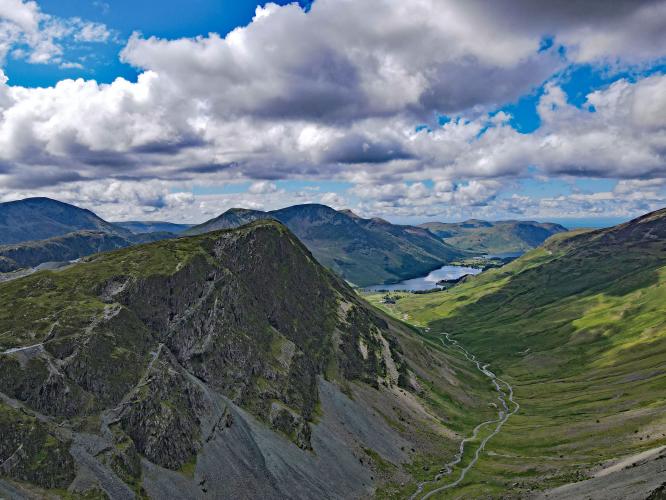
INTRO
PLAN YOUR ROUTE
 We've partnered with Sherpa-Map.com to bring you the best route planning tool. With a PRO Membership you can use this climb as a reference when creating your route.
We've partnered with Sherpa-Map.com to bring you the best route planning tool. With a PRO Membership you can use this climb as a reference when creating your route. ROUTE MAP



 We've partnered with Sherpa-Map.com to bring you the best route planning tool. With a PRO Membership you can use this climb as a reference when creating your route.
We've partnered with Sherpa-Map.com to bring you the best route planning tool. With a PRO Membership you can use this climb as a reference when creating your route. 
Cycling Honister Pass from Gatesgarth.
Ride 1.4 miles gaining 809’ at 10.8% average grade.
Any direction one turns on Honister Pass is a sight worth putting on the cover of a magazine. Really. Bright green mountains encircle a few lakes near the base of the climb and at the top of Honister Pass, you’ll be among steep shale cliffs. Our climb route begins at a small village called Seatoller, which is made up of only a few B&B’s and residential houses. From Seatoller, the gradients are brutally steep as you parallel a creek on a very narrow road. Be weary of massive tourist buses that travel this road and take up nearly every inch of it. The steep beginning miles give way to an easier second half of the climb as the Shale mine atop begins to come into view. At the summit, there is a cafe (go for the chicken sandwich!) and there you can buy tickets for a tour of the mine if you're so inclined. Honister Pass, as well as the nearby Newlands Hause climb are two of the most scenic climbs to be found in all of the UK.
At the top, you can score a slate sign on the spot which we were actually interested in, but could not come up with a plan for safely getting it down the mountain on our bike.
Climb begins up the road from Seatoller.
“The most beautiful of the Lake’s passes, Honister offers a brilliant ride from either direction.” Simon Warren, 100 Greatest Cycling Climbs, A Road Cyclist’s Guide to Britain’s Hills, p. 137.
Beautiful and colorful sites on the lower part of the climb coming out of Seatoller.
Ride alongside or in sight of Gatesgarthdale Beck much of the climb.
Road from Buttermere Lake.
Canyon leading to the pass.
Honister Mine
Live tours - 4.6 of 5 star Google Review.
Have a bit at the Honister Grill at the finish.
Honister Pass was included in the Tour of Britain in 2013.
‘
Left photo: Parking lot and National Trust sign at the finish.
Right photo: gradient sign just before the descent of Honister Pass to Seatoller.
These climbs are within Lake District National Park, 236,200 hectare (583,663 acres) established in 1951:
“The Lake District, also known as the Lakes or Lakeland, is a mountainous region in North West England. A popular holiday destination, it is famous for its lakes, forests and mountains (or fells) and its associations with the early 19th century writings of William Wordsworth and the other Lake Poets, Beatrix Potter, and John Ruskin. A National Park was established in 1951 and, following a minor extension in 2016, now covers an area of approximately 2,362 square kilometres. It was designated as a UNESCO World Heritage Site in 2017.
It is located entirely within the county of Cumbria, and all the land in England higher than 3,000 feet (914 m) above sea level lies within the National Park, including Scafell Pike, the highest mountain in England. It also contains the deepest and longest bodies of water in England, respectively Wast Water and Windermere.” Wikipedia - Lake District National Park
That’s a wrap!!